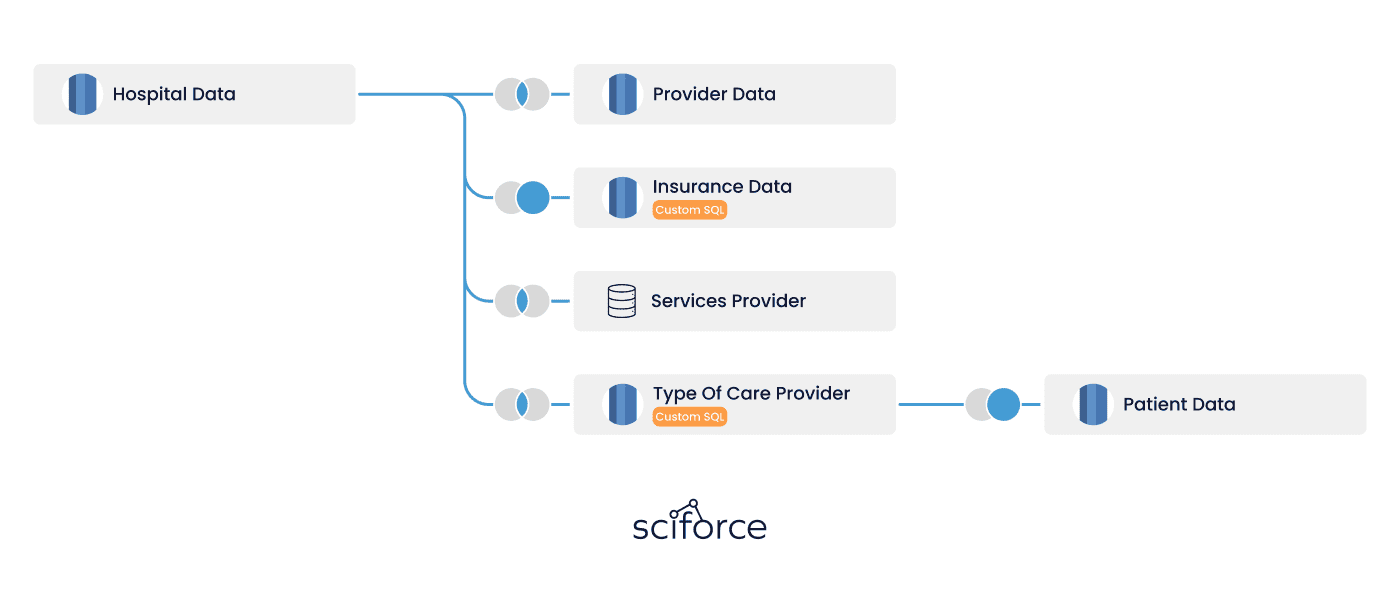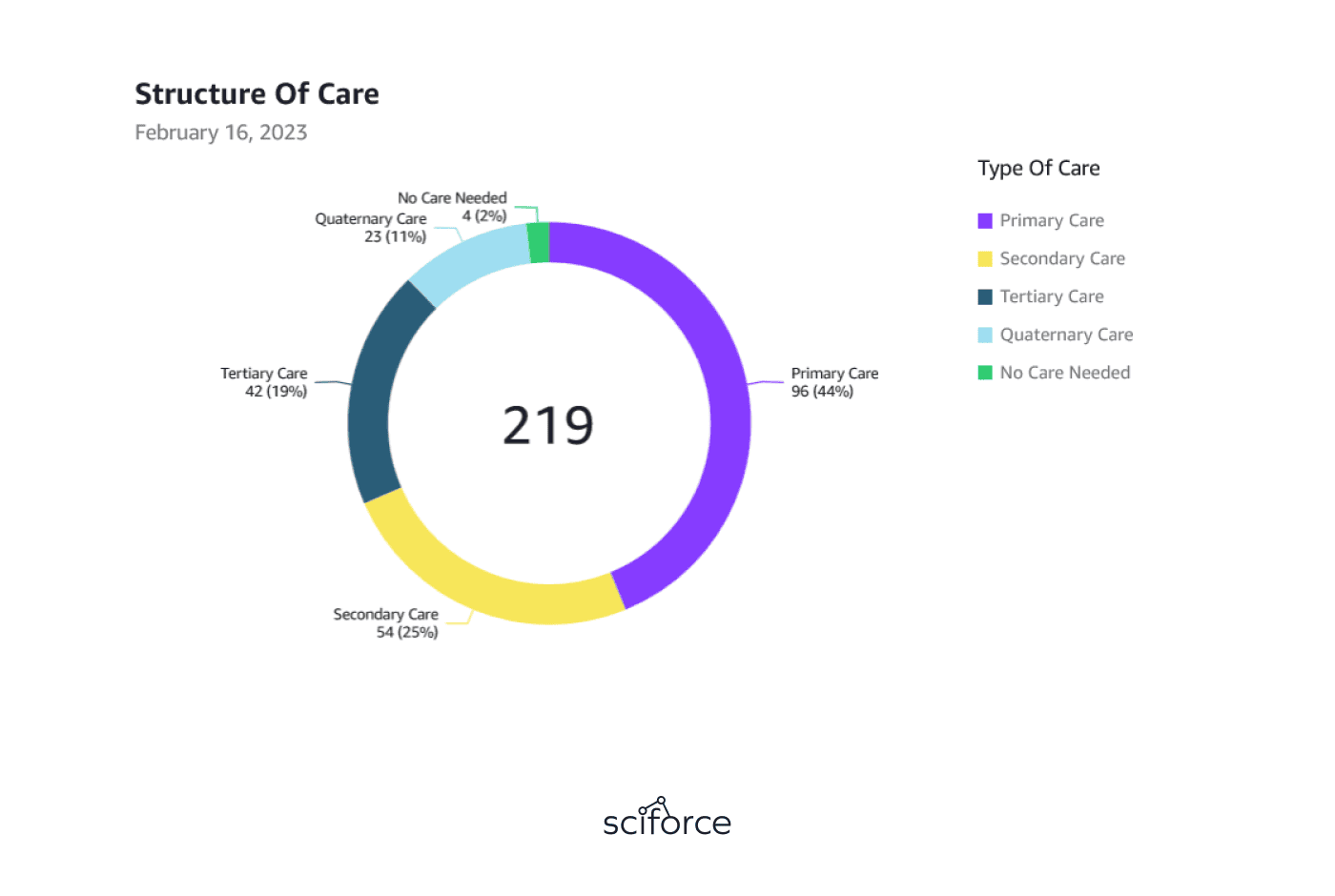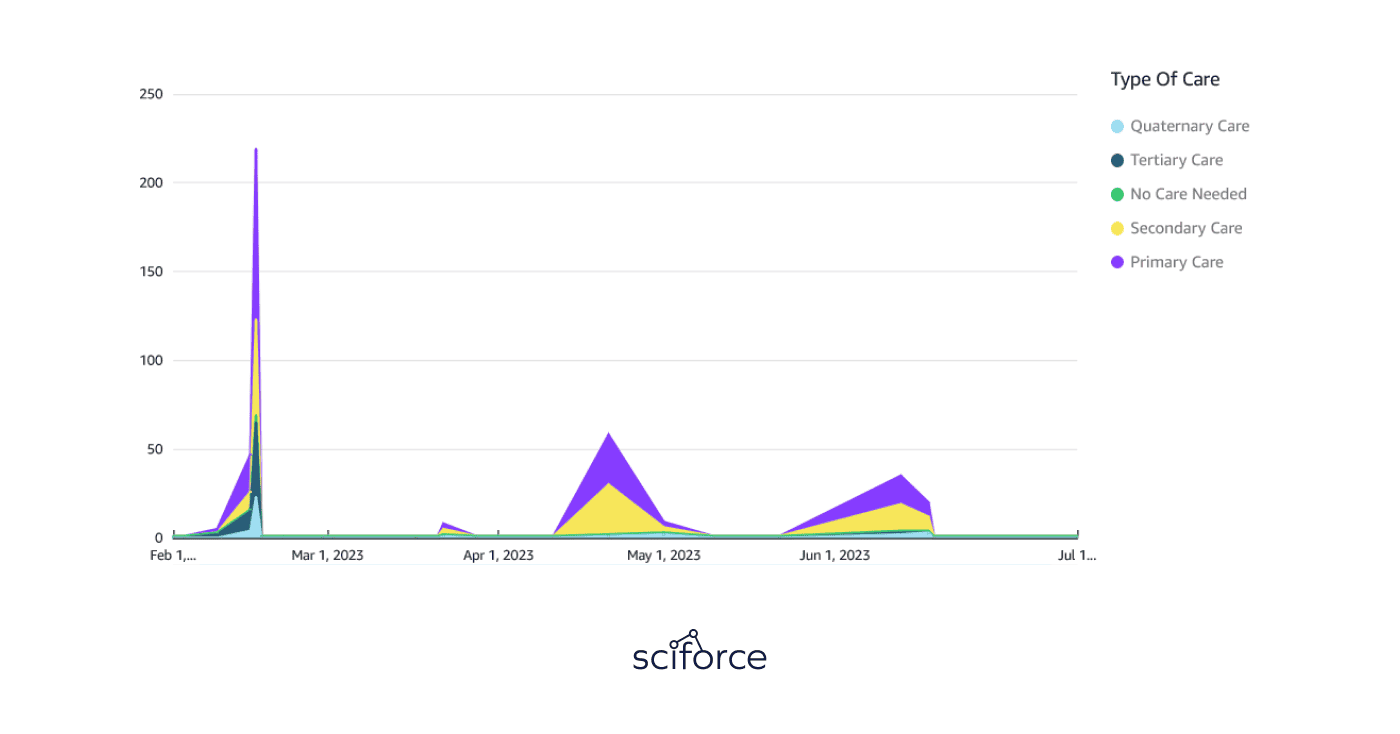We faced several challenges when it came to getting statistics of the efficiency of clinical trial-supporting platforms for data analysis and reporting. The data was stored in multiple disparate systems, making it challenging to consolidate and access meaningful insights. Generating traditional static reports consumed valuable time and resources, hindering the ability to make timely decisions. Additionally, the lack of real-time data access limited the capacity to respond swiftly to critical medical situations and optimize resource allocation.
To address the data analytics challenges, we embraced AWS QuickSight with a systematic approach:
Step 1. Data Integration and Centralization: Data was integrated from various sources into a centralized AWS data lake.

Step 2. Real-time Analytics and Dashboards: Using AWS QuickSight's real-time data processing capabilities, we created analysis design and interactive dashboards that displayed critical performance metrics in real-time and facilitated making informed decisions promptly.

Step 3. HIPAA Compliance and Data Security: We ensured compliance with HIPAA regulations as AWS QuickSight provided robust data security measures, including encryption, access controls, and data monitoring, to safeguard patient information.
Step 4. Predictive Analytics for Clinical Insights: We leveraged AWS QuickSight's integration with AWS Machine Learning services to perform predictive analytics on patient data, identifying potential health risks and optimizing clinical trial performance.

AWS QuickSight is empowered with a scalable data analytics solution, driving improved patient care and operational efficiency. Its real-time analytics, interactive dashboards, and predictive features harnessed the full potential of healthcare data, transforming researchers' analytics process and establishing them as a leader in data-driven healthcare delivery.
The usage of modern solutions of business analytics in the field of health care plays a crucial role today: predictive analysis of patient data, identification of potential health risks, and optimization of the effectiveness of clinical research allow more accurate decisions to be made and improve the overall quality of medical care.